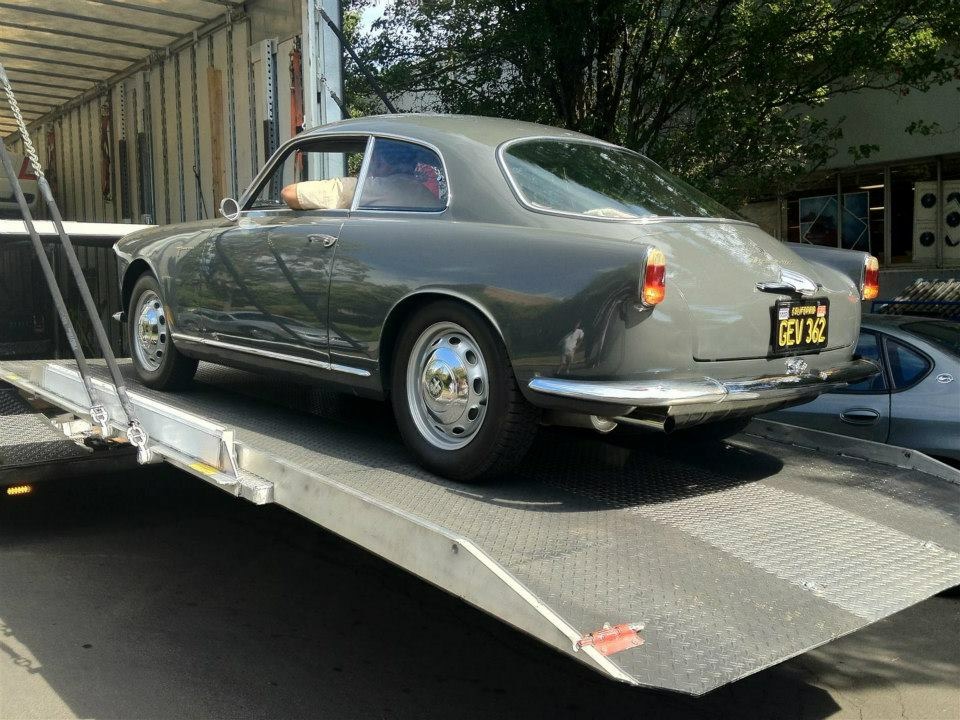
On April 3, 1958 — 60 years ago — our Alfa Romeo Giulietta Sprint Veloce rolled off the assembly line in Arese, Italy.
In the small-displacement GT category, it was one of the most sophisticated cars in the world.
The Sprint coupe was also the car that saved Alfa Romeo as it made a post-WWII transition from building large cars in small numbers to small ones in large numbers.
The SCM Sprint, s/n 1493E.06524 was sold to a dealer in Lugano, Switzerland on April 8, 1958. Somehow it made its way to the United States. Its life from that point until it was discovered 20 years ago parked by the side of the road in southern California is unknown.
Luckily, it was found by an Alfa enthusiast, Alan La Salle, who already had a Sprint in his garage. He brought the car back to life, and drove it to Concorso Italiano in Monterey twice.
I bought it from him at Concorso Italiano six years ago.
We then re-restored the car, with local guru Bill Gillham attending to the paint and sheet metal, and racing legend Denny Pillar rebuilding the engine (s/n 1315.31015) to 1958 “hot-rod” specs.
We’ve put a few thousands of miles on it since. It’s a delightful car to drive on two-lane roads, with enough power and adequate handling considering its age.
It’s probably the most valuable of my cars, being a transition model from the lightweight “eyebrow” 750 Series Sprints to the later “egg-crate grille” cars that developed into the 101 Series cars.
I drive it the least of my Alfas. While its finned aluminum drum brakes were superior in its era, in today’s congested traffic they are barely adequate, with nearly every other car on the road being able to stop much more quickly. When driving it, you are 100% involved, with little room for distraction or driver error.
Enthusiasts now call this interim car the “Confortevole.” According to some sources, there were 159 built, and mine is the 87th. The chances are that only a handful survive, especially with their original drivetrains.
SCM subscriber Santa Spadaro, of Dominic’s European Car Repair in White Plains, NY, has one that he vintage races. I’ve seen one at Euro Auto Fest in Greenville, SC. I found another, just a couple of serial numbers apart from mine, when I was on the Argentine Mille a couple of years ago.
I think about the Sprint’s early days, when it being used for daily transportation. In fact, when La Salle found it, the car still had a radiator blind installed, which was designed to help the engine warm up more quickly in very cold weather.
What a delight it must have been in 1958, when most European cars had less than 1,000-cc displacement due to tax regulations. The Sprint, with its 1,300-cc, twin-cam, dual-Weber powerplant would have been a rocket ship by comparison.
It now lives a cossetted life in the heated SCM garage. Before every significant road trip it goes to local Alfa expert Nasko for a check-over, and there’s always something small that he catches before it becomes something large.
I look forward to SCM subscribers driving the car on the 30th Anniversary SCM tour this summer.
This car has made the transition from everyday driver to decrepit used car to restored beauty.
In some ways, the Sprint has now become immortal. So long as our society provides opportunities for us to drive our old cars, the Sprint will be desirable to enthusiasts for its mix of performance and style.
We are now the caretakers of these cars. More than machines, they are living and breathing examples of an era long-gone. Each time I slide behind the wheel, I am transported back in time to an era when the Sprint Veloce was a king of the road.
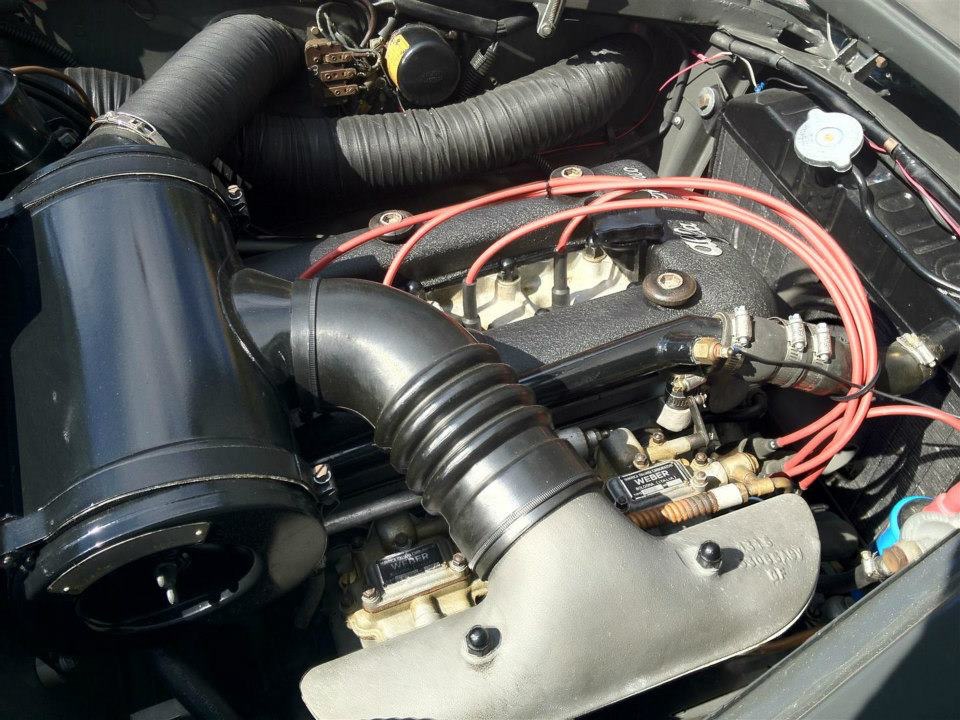
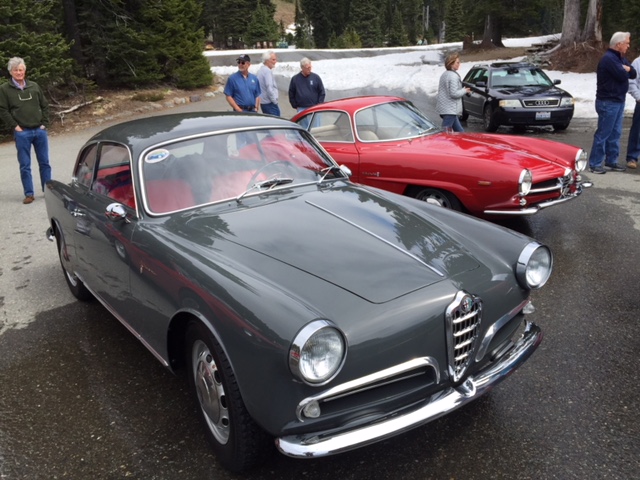
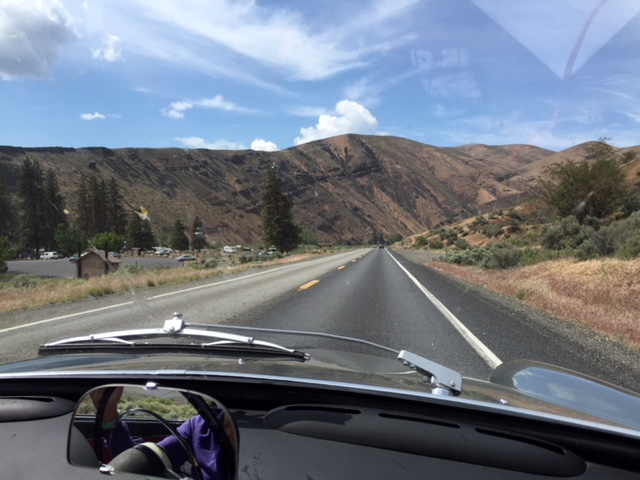
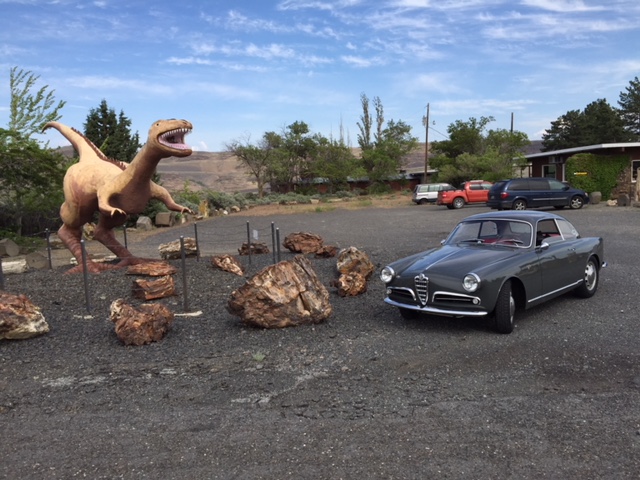
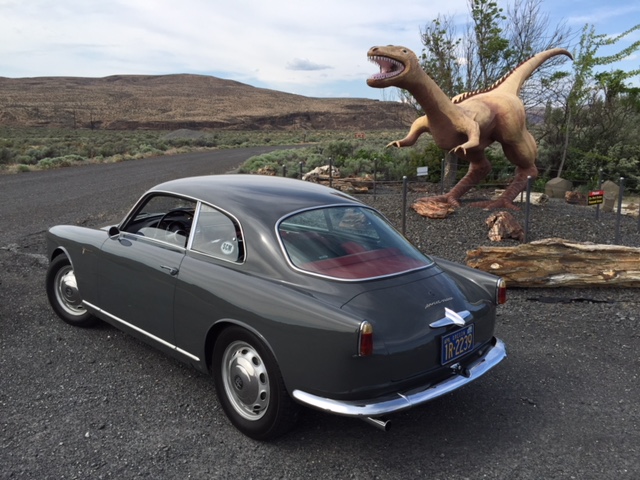
Keith:
My first Alfa was a 1960 Sprint and I remember all of its beuaty quite well, as is the case for the driving pleasure, and I recall to a lesser degree its faults. As ski patrolmen, my buddy Mark Reed would drive every morning to Stratton Mountain the thirty minutes from our rental house, to race up the entry road against the Mini of a fellow patrolman at 6:30 AM; Except when the temperature was below zero. Starting the Alfa at minus thirty was a real chore. In my ten or so Alfas since, I avoid thirty below…
I thought Alfa Romeo’s Arese plant didn’t open until 1963?
Keith, I think that’s a little to conservative regarding Giulietta brakes and modern traffic. True, ever modern car from a Honda Fit to BMW’s will emergency stop much quicker. Just leave enough following distance, like we did in the sixties.
My wife and I’ve drove ours roughly 10,000 miles in the last two years on European roads, from Germany’s A5 and England’s M25 to small roads in Wales, and dozens of high French Cols. I never felt brakes were unsafe, or even a concern. My car is 1493-6337 just a few weeks older than yours.
T-Rex: It’s not fair!!! I’m extinct and you’re not? You’re only a machine!!!
Hi Keith,
I’m the owner of the Confortevole you saw at Greenville, SC and also at Amelia Island last year. The car is #AR 1493 E 06596 and was built on April 30,1958 and delivered to Alfa dealer Societa per il Commercio dei Produtti Alfa Romeo, Lugano, Switzerland and sold to an Alfa mechanic Gustav Gysin whose shop was in Basel, on May 19, 1958. Gustav owned the car for 46 years until his death at around 80 yr. old. He drove the car about 54,000 miles in those 46 years. The car has been sympathetically preserved with a lot of originality. The Confortevole Registry in South Africa estimates that there may be maybe 40-45 of the original 199 Confortevoles remaining. Most of those cars are of course bad or worse. We’ve owned our car for 4 1/2 years and love it and it’s been totally dependable. In that time , other than your car, I’ve seen only two other Confortevoles and I’ve seen none for sale in that time. Maybe your blog will help shed some light on a very rare model that seems to be pretty much unknown to the collector car hobby and even in Alfa circles. 600 Lightweight were produced vs the 199 Confortevoles, making the Confortevole 3 times as rare and a Confortevole IS a Lightweight without the aluminum panels and plastic windows but mechanically identical. In fact at the end of Lightweight production, both Lightweights and Confortevoles were built at the same time and sold for the same price.
Happy 60th to both of our cars and any or all of the remaining Confortevoles. And as they say “keep the revs up”.
Don Fowler
Greensboro, NC
Keith, your price guide has a Confortevole set at 111k, but there are none in your database in the last ten years or so. How does one value these cars if there are no comparables? Thanks.